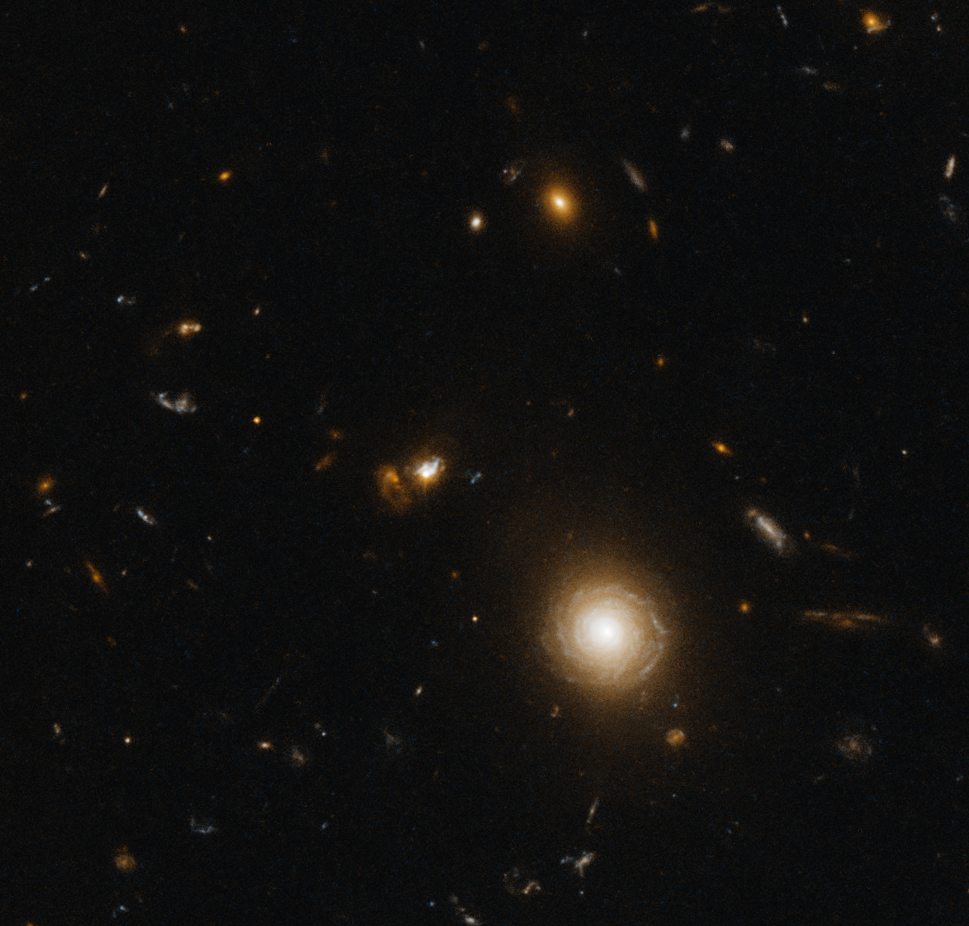
Quasar J1507+3129 (2014)
Quasar host galaxies are hard to image. They’re very far away and the quasar itself is very bright. Take a look at 3C 273 and you’ll see what I mean. The quasar’s glow (which astronomers dryly but more accurately refer to as a point spread function) covers up the galaxy itself. Another image in the Wikipedia article shows 3C 273 with the glow subtracted, revealing the galaxy.
Anyway, this one is different. I didn’t have to do that, thankfully. I will point to the quasar. It is not the obvious bright spiral galaxy to the lower right. Look up and to the left of that bright spiral and find the merging galaxies. You can see the quasar itself as a bright point in the right side partition of the colliding masses. There is a lot of dust which is reddening the quasar. Hubble’s view of things like this is not as good as it could be. This is a job for an infrared telescope! With a small amount of luck and the efforts of many scientists and engineers, JWST will perform this task. Maybe even this very quasar will be looked at. It will be interesting to combine the data sets from both Hubble and JWST one day.
Red: ACS/WFC WFC1-1K F814W (j95w11010_drz)
Green: Pseudo
Blue: ACS/WFC WFC1-1K F475W (j95w11020_drz)
North is NOT up. It is 22° clockwise from up.
Copyright information:
Hubble data is public domain, but I put a lot of work into combining it into beautiful color images. The minimal credit line should read: NASA / ESA / J. Schmidt

This work is licensed under a Creative Commons Attribution 3.0 Unported License.


